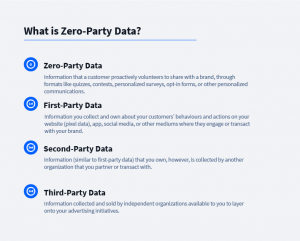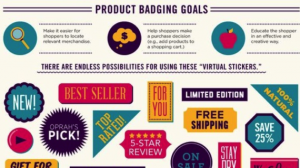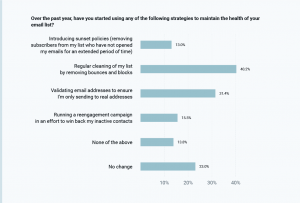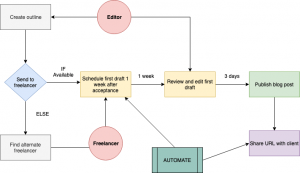
YouTube is the second most powerful search engine on the planet, and holds the top spot as the largest video network in existence.
The video site continues to grow more pervasive with the maturation of smartphone technology. Today, half of YouTube video views stem from mobile devices.
For this reason, and many others, YouTube is the master of reaching across generational boundaries to impact and engage members of GenX, GenY and GenZ. For example, YouTube currently reaches more 18-34 and 18-49 year-olds than any U.S cable network currently broadcasting.
Because of the popularity of the platform, influencers have spawned from the network and continually leave lasting impressions on their dedicated viewers. Studies suggest that recommendations from influencers are trusted 92% more than from celebrities or advertisements.
The trust factor brought forth by influencers is one of the most notable reasons as to why influencer marketing is so effective.
It’s not as simple as it looks
Leveraging influencers on YouTube is not as simple as it sounds. Because there are many performance and brand risks associated with YouTubers that need to be managed in order to deliver rockstar results.
YouTubers are legitimate masters of their craft and make their living by presenting themselves authentically. This means that brand interference regarding their voice or image is not normally welcomed.
Despite the challenges, brands and YouTubers can get along famously when the right partnership is forged.
The balancing act
By way of example, Google recently recruited famed YouTube influencer Lewis Hilsenteger from the channel Unbox Therapy to help make some noise about Android Pay.
The video depicted Lewis travelling throughout New York City, visiting destinations that accept the form of payment to prove that you could survive solely with Android Pay. This is a prime example of recruiting an influencer that expresses a brand’s message while maintaining their authenticity.
The video generated 1.7 million views while showing off the real-world capabilities of Android Pay.

No doubt successful collaborations like these and the significant revenue generation potential spurred Google to recently acquire influencer marketplace Famebit.
The 9 key steps to get millions of views on YouTube
Below you’ll find nine steps that fast-casual restaurant chain Qdoba Mexican Eats took when engaging the YouTube audience for the first time.
The results were phenomenal (and, in full disclosure, delivered under the direction of, as well as executed by digital marketing agency Evolve!, Inc.).
If you’re planning on diving into YouTube to help grow your business, use this campaign as a model – it delivered 3 million views, 84K social engagements, and 200M potential impressions, all while adhering to strict brand guidelines and beating aggressive price targets.
1. Set your goals and success criteria
As with any marketing campaign, align your influencer marketing campaign with your overall marketing and sales goals.
Define success using quality metrics, such as messaging and how the brand is portrayed, as well as quantifiable targets such as cost per video view, average length of video view, number of targeted views, and cost per conversion.
2. Set a budget
The cost per view charged for YouTube sponsorships varies WIDELY, depending on factors such as audience size, reach, demographics, engagement, their industry vertical and genre, the type of sponsorship and length of integration, the YouTuber’s desire to work with a particular brand, and whether the talent is represented by an agency.
A good rule of thumb is to target a .04 – .07 cents cost per view (CPV) for video integrations and a .08 to .15 CPV for dedicated videos.
Brands should also set aside budget for content generation (landing pages, blog posts, prizes and and/or promotions), analytics software for tracking, a promotional ad budget, and manpower.
3. Create a theme and campaign messaging that supports your goals
It can be something as simple as capturing people’s excitement as they try delicious Qdoba entrees for the first time (#QdobaUnbox), or reveling in the occasions when More is Better (#MoreIsBetter), including indulging in Qdoba’s generous array of delicious toppings (#MoreFlavorIsBetter).
Evolve even created a contest celebrating Qdoba’s key differentiating factor: Free Guacamole (#FreeGuac).
Develop brand, and campaign-specific messaging, but leave ample room for YouTubers to exercise their creative license.

Remember, integrations are NOT advertisements. Videos that come off as too commercial tend to get panned in the comments and generate lower-than-expected view counts.
4. Establish your selection criteria
What constitutes a brand match?
Start with genres, industries and channel demographics, including age, sex and geography.
Does the campaign theme fit their interests? Do they create content that would resonate with or offend your audience?
Identify any influencers that meet this criteria, fall within the audience size that you are looking to engage, and begin the outreach process.
5. Develop a pitch letter
Be clear about the campaign requirements, and set expectations: Are you looking for an integration or a dedicated video? What four or five key messages do YouTubers need to address in the video? And what is your timeline?
Basically, what are the promotional requirements and is there any additional information you need from them when they respond to your proposal.
But bear in mind that people who have built sizeable, engaged followings can afford to be choosy about which brands they want to work with. You may want to excite them with something that’s unique about your brand.
Qdoba offered vloggers a summer of free food, in addition to the paid sponsorship.
6. Recruit enthusiastic YouTubers
This is perhaps the most time-consuming step, and the most critical to the success of your campaign.
You know you’ve hit gold when you’ve identified YouTubers who meet your brand criteria, like your brand and offer creative story lines, and sometimes bonus promotions in their response.
There are 3 routes to recruit YouTubers:
- Outreach directly to the people you want to work with via the email listed on their YouTube channel
- Work with talent agencies you know and trust
- Solicit proposals through influencer marketplaces like Famebit, Grapevine Logic or Reelio

7. Spell out everything in the contract
Flush out the creative before finalizing the contract, and include the type of integration, key messages, project timeline, the reviews process and video promotions.
YouTubers tend NOT to want the brand to weigh in on things like the Video Title or storyline outside the integration. On the same token, it is vital to be somewhat flexible when working with influencers on the creative direction of the content. These folks have built substantial followings that are enchanted by their unique voice. Setting too rigid of a structure that is outside the norm for influencers could result in a deal going south or a video not receiving the attention it deserves.
8. A/B test everything. Measure, tweak and repeat
Test various genres, campaign themes, messaging, calls to action, and amplification strategies. At this stage, we generally prefer to partner with YouTubers that have small but engaged audiences. This will allow you to get the most bang for your buck while simultaneously minimizing any potential losses for creatives that do not resonate with audiences.

Measure campaign performance, focusing on actual video views, social engagements and cost per conversions, if that’s relevant. Pivot as needed and update projected outcomes.
We use several tools simultaneously, including Simply Measured, to monitor multiple channels to gain the most clear and comprehensive picture possible.


9. Scale!
Once the campaign has been optimized, turn up the volume. Contract larger YouTube channels, and consider using contests or launching several videos at once to support product launches.
These introduce an added layer of complexity because they need to adhere to strict timelines and you potentially need to manage multiple videos at once. On the flipside, they also generally produce much more significant results, so while efforts will become more intricate, they will also become much more fruitful.
Qdoba A/B tested several concepts before running a two week #FreeGuac campaign, which drove 2.4 million video views. Participating YouTube vloggers invited their viewers to enter into a scavenger hunt contest for the chance to win cash prizes, free food and cool SWAG.
Contests like these are ideal for scaling a campaign as almost any marketing element that engages an audience on a participatory level is going to garner more attention compared to content that is merely observed through comments and shares. The contest subsequently resulted in Qdoba collecting over 10K contest submissions.
Wrap
As video continues to grow, YouTube is quickly transitioning into the premier influencer marketing channel. The power of video content is unmatched by its predecessors and influencer marketing, when managed properly, has the ability to permeate and engage an audience in unparalleled fashion.
The most challenging aspect of this discipline is that the rules of engagement are constantly in flux, meaning that for the best results, it is advisable to collaborate with specialty digital marketing agencies that work day-in and day-out crafting influencer strategies on YouTube that resonate, sell, and make a brand’s efforts worthwhile.
Digital & Social Articles on Business 2 Community(111)
Report Post







